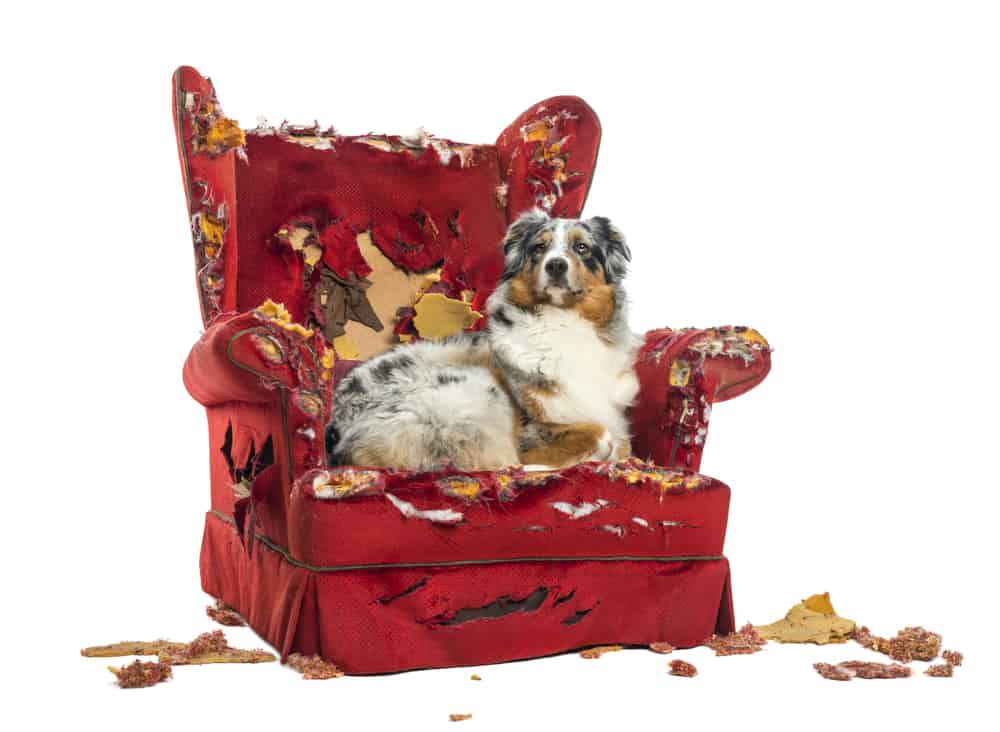“This post contains affiliate links, and I will be compensated if you make a purchase after clicking on my links.”
By Megan Marrs, Founder K9 of Mine
Man’s best friend, and man’s greatest mystery. Our pets are so expressive, but it’s a language we can’t yet understand—how are you supposed to know what your dog is feeling?
You need to understand your pet’s moods to best meet their needs. Luckily, expert dog trainers, vets and highly in-tune pet owners have studied dogs extensively to learn how you can read their mood. We’ve compiled some of the top tips to get you on the right path.

How Do Dogs Communicate?
Although they have their own language, dogs don’t use barks to communicate with humans—unless that communication is “get off my lawn, stranger!”
Instead, dogs reveal their wants, needs and moods through dog body language.
Six Common Dog Moods—What to Look For
#1 Happy
When your dog is happy, you don’t have to do much, but it would be nice to know what got them into this mood.
If you’re doing an activity, or have just finished, and want to know if they enjoyed it, look out for a few signs.
Ear Movement
Have you ever noticed how your dog’s ears go back when they see their friend? They wriggle, wag their tails, ears pressed right back as they bounce around with reckless abandon.
That excitement is evident—and it can give you a clue that your dog is happy. If you see those excitement-ears without the wriggling and wagging, it’s a sign your dog is having a good time. The ears may switch between normal and back positions, but it still means the dog is happy.
Smiling

No way, dogs don’t smile!
While they don’t technically smile, sometimes a dog’s mouth positioning while happy appears as one.
If your dog is happy, the mouth may be slightly open, tongue out, panting—but they’re not just cooling down, or thirsty. The upturned corners of the mouth reveal that your dog is happy after your recent activity.
Leaning In
Try petting your dog when they appear happy, or try sitting close. If your dog leans into your hand or leans against you, they’re happy.
#2 Sad
Maybe you’re not paying them enough attention. Maybe they lost their favorite toy, or maybe they dislike their new routine or environment.
You can tell your dog is sad by these easily recognizable behaviors:
- Furrowed brow and lethargic behavior.
- Whines, whimpers or groans out of the blue.
- Refusing treats and play.
- Sleeping more than normal.
- Eyes squinting.

Change up your routine, encourage activities your dog enjoys, and you should be on the path to happiness again.
However, if your dog displays these behaviors even when you’re doing your best to remedy the sadness, it may be a sign of dog depression. Consult a vet if you’re worried.
#3 Fearful
Plenty of things can scare a dog, even around the home—it could be something as big as a home renovation, or something simple like not liking your new coffee maker’s noises.

If your dog is outright fearful, they may attempt to hide, perhaps under a chair or behind a door if they fit. This is often paired with shaking, or perhaps growling and brief aggression.
That’s usually a short-term display, though—just while your coffee maker is on, or someone’s using a hammer.
Longer-term signs of fear include:
- Toilet training regression.
- Refusing to settle.
- Refusing food.
- Excessive yawning.
- Visible whites of eyes.
#4 Anxious
Anxiety is a little different from fear. Your dog won’t usually run and hide, but may exhibit other behaviors that appear as misbehavior. They’re actually revealing their mood. These behaviors include:
- Digging.
- Trying to escape.
- Destroying clothes or furniture.
- Refusing food.
- Frequent urination.
- Pacing, often paired with panting.
- Howling—especially with separation anxiety.
- Not settling.
Try comforting your dog with pets, offering treats, and try to find the source of your dog’s anxiety. It might be a loud appliance, heavy traffic nearby, or separation anxiety after someone leaves the house.

#5 Bored
Signs of boredness are often misinterpreted as misbehaving, and they also cross over with fear and anxiety.
You need to provide your dog with lots to do and plenty of toys—perhaps puzzle toys if they’re smart. Otherwise, they may start:
- Destroying furniture, or shoes.
- Stealing your possessions to play with—like shoes, cushions, gloves and other small items.
- Sleeping excessively.
- Attempting escape.
- Stealing food out of the trash, or out of a visible treat stash.
- Excessive barking for no reason.
More innocently, your dog may also bark at you and demand attention. It’s best to give them a few pats and a quick toss of a ball before they start acting out as stated above.
#6 Tired
Lastly, like humans, dogs can get overtired and may be too preoccupied to sleep. Younger dogs will commonly have this issue, everything is so new in the world!
If your dog is overtired, you may see them:
- Becoming hyperactive.
- Getting irritable—barking at you for no real reason.
- Forgetting commands.
- Not wanting to play, or sleep.
- Drinking a lot.
- Lying down in usually exciting scenarios.
- Easily distracted.
In cases of overtiredness, take your dog to bed and encourage sleep. Remove all distractions and try to create a calming environment for the dog.
Dog Moods: The Bottom Line
Dog body language and dog emotions are heavily interlinked, and there’s so much more to delve into on the subject.
However, when looking for key moods, it’s important you know the signs so you can change your behavior and avoid making your dog feel negatively in the future. On a lighter note, discovering when they’re happy can help you make them happy more often.
About the Author: Megan Marrs
Megan is the founder of K9 of Mine, starting the site as a tribute to her childhood dog Benzy. An avid dog enthusiast since childhood, her goal is to help owners develop better, richer relationships with their pets through compassion and understanding. When not managing K9 of Mine, Megan spends time training her own rescue pit bull mix Remy, attending digital lectures on positive reinforcement-based training, and volunteering at local animal shelters.


















